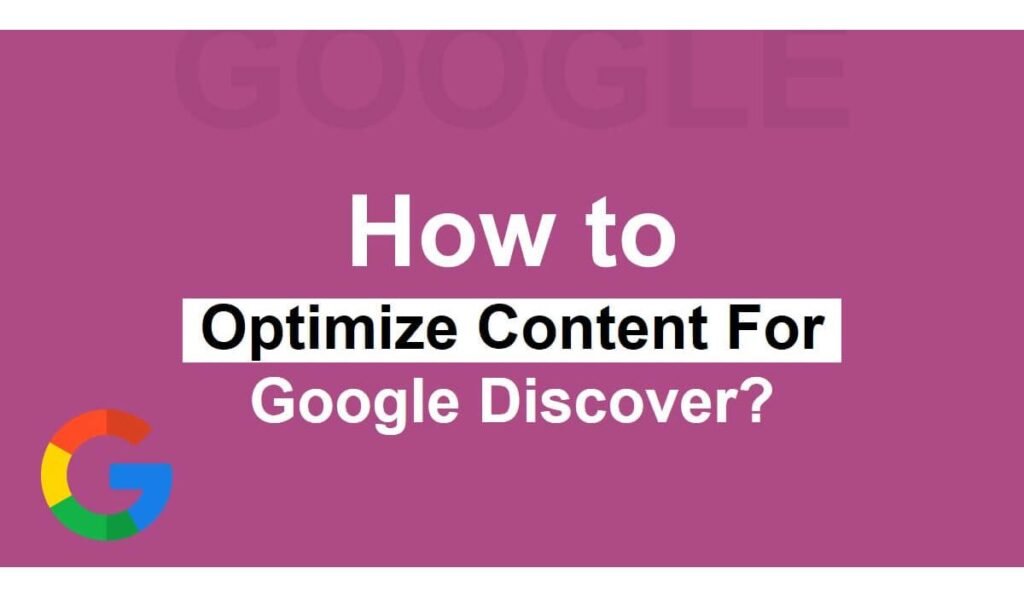Google Discover is a crucial source of organic traffic for publishers. This personalized feed, accessible through Google’s mobile app and mobile search homepage, provides users with an engaging experience. It suggests relevant content even before users know what they want to search for. As one of the fastest-growing traffic sources for news websites, some publishers report that their Discover traffic surpasses organic search. By aligning your content with Google’s guidelines and user preferences, you can boost visibility through Google Discover Optimization. This strategy helps expand your audience effectively.
This article serves as a detailed guide to Google Discover Optimization. It explains how the feature operates, the significance of optimization, and practical strategies. Following these strategies can enhance the likelihood of your content being featured.
What Exactly Is Google Discover?
Google Discover is a tailored content feed available on mobile devices. It showcases news articles, videos, and images specifically curated to align with each user’s interests and online activities. This feature aims to replicate the personalized experiences commonly found on social media platforms.
Designed to deliver fresh and relevant content proactively, Google Discover utilizes user data to present information that resonates with individual preferences. By collecting and analyzing data, the platform ensures users receive updates that pique their interest, enhancing engagement and satisfaction.
Similar to the AI-driven suggestions users find on TikTok or Instagram Reels, Google Discover leverages machine learning algorithms to assess user behavior. This technology helps identify the topics and content formats that users are most likely to interact with, allowing the platform to source and display relevant content from various publishers and creators.
Google Discover showcases a wide variety of content, including:
- News articles: Fresh, timely news stories from reputable sources.
- Video content from various platforms, most notably YouTube and YouTube Shorts, on subjects aligned with user interests.
- Blog posts and articles: Evergreen or timely articles covering various topics in sectors like lifestyle, technology, travel and health.
- Images and infographics that provide valuable information.
- Product recommendations: Reviews and suggestions for products in categories such as tech, fashion and home goods.
- Paid Discovery ads also appear throughout user feeds as they scroll.
In essence, a user’s Google Discover feed mirrors their interests and past behaviors, placing greater emphasis on entertainment, sports, hobbies, and various activities. This personalized approach ensures that the content aligns closely with what users enjoy and engage with.
Users have the power to customize their feeds actively. They can follow or unfollow particular topics, fine-tune their preferences using the “show more” or “show less” features, and choose to hide content from certain publishers.
Benefits of Google Discover Optimization
Optimizing your content for Google Discover can have a significant impact on your online presence and overall success.
Enhanced Visibility and Traffic Opportunities
- Google Discover reaches millions of users daily, providing substantial visibility and exposure to a wider audience
- Featuring your content can lead to significant traffic growth for your website.
Improved user interaction and experience
- Because the content in Google Discover is tailored to individual preferences, it tends to connect better with users, resulting in increased engagement and valuable interactions with your website.
- Additionally, allowing users to follow particular publications can encourage more dedicated returning visitors.
Possible effects on brand recognition and audience expansion
- Having a prominent presence on Google Discover boosts your brand’s visibility and credibility.
- As users consistently see your content, you foster trust, loyalty, and an expanding audience that can contribute to your brand’s growth.
Enhancing Content for Google Discover Optimization
To effectively optimize your content for Google Discover, prioritize creating high-quality and engaging material that resonates with your target audience’s interests.
The primary difference between traditional search engine optimization and Google Discover optimization lies in the shift from targeting specific queries to concentrating on user interests.
Google Discover focuses on delivering content that aligns with users’ interests, even in the absence of their explicit search intent or query. Below are some tips for enhancing your content for this platform.
Prioritizing Quality and Relevance for Google Discover
Customize your content to align with the interests and preferences of your target audience, utilizing historical data to enhance your approach. Examine user behavior and trends to identify which topics resonate most effectively.
Ensure your content remains current and pertinent, while also engaging users. Strive to deliver valuable insights, address challenges, or provide entertainment for your audience.
Develop valuable, trustworthy, user-centric content
Google’s Discover guidelines clearly outline the types of content most likely to feature in users’ feeds. Content that is helpful, trustworthy, and user-focused is defined as pages “designed mainly to serve people, rather than to achieve search engine rankings,” and adheres to E-E-A-T principles.
When evaluating your content, Google suggests considering the following questions:
- Does the content offer unique insights, reporting, research, or analysis?
- Is the information presented in a trustworthy manner, with clear sourcing, evidence of expertise, and background details about the author or publishing site, including links to an author profile or the site’s About page?
- Do you have a current or target audience for your business or site that would find this content valuable if they visited directly?
Optimize headlines
Craft engaging headlines that encourage users to click and delve deeper into your content.
Incorporate captivating language, numbers, or questions to pique users’ curiosity. However, steer clear of clickbait, as it contradicts Google Discover’s guidelines.
Include visual components and adhere to image specifications
Incorporate attractive media to improve how your content is presented. High-quality images and captivating videos can greatly boost user engagement and retention, making them essential for visibility in Discover’s card-based interface.
Images should be at least 1,200 pixels wide and set to the max-image-previewoption to enhance the chances of attracting visits from Discover. Additionally, refrain from using a site logo as your image.
Strike a balance between evergreen and current content
Evergreen content maintains its relevance and can continue to be valuable over time when updated periodically.
Nevertheless, due to its algorithm-driven feed, Discover generally prioritizes timely news articles, trends, and event-related content that align with current happenings and popular subjects.
Highlight your expertise and establish topical authority
Establish your expertise and differentiate yourself on Google Discover by offering comprehensive analysis that goes beyond superficial details and includes expert insights.
Present unique viewpoints or original research to set your content apart from competitors, and enhance your credibility by highlighting your qualifications, experience, or connections within the industry.
Technical Enhancements for Google Discover Optimization
To increase your likelihood of featuring in Google Discover, it’s essential to focus on technical SEO elements that can boost your visibility and effectiveness. Here are several important strategies to keep in mind:
Utilize structured data
Use schema markup to offer extra context and details about your content. Structured data types like Article, NewsArticle, VideoObject, and Breadcrumb assist Google in comprehending your content more effectively and showcasing your expertise.
Adhere to Google’s guidelines for implementing structured data to ensure your markup is properly formatted. Additionally, use schema testing tools to verify your markup and resolve any issues.
Enhance the experience for mobile users
Given that Google Discover primarily operates on mobile devices, it is crucial to optimize your content and website for mobile viewing.
Implementing a responsive website design is essential for delivering a smooth experience across various devices, particularly mobile, which accounts for most web traffic. Focus on optimizing images, code, and resources to minimize loading times and enhance your site’s performance on mobile devices.
When creating content, consider the needs of mobile users. Use clear headings, bullet points, and brief paragraphs to improve readability on smaller screens. Additionally, prioritize user experience by ensuring intuitive navigation and layout.
Enhance page loading speed
High-resolution image files can negatively impact your page loading speed. To enhance performance, compress images without sacrificing quality and consider using modern formats like WebP.
Furthermore, perform routine website audits to pinpoint and address any performance problems. Look for outdated plugins, superfluous scripts, or other components that could slow down your site’s speed and overall efficiency.
Assessing Performance and Analytics
The best method for tracking your Google Discover traffic is through Google Search Console (GSC). In the Search Console, you can see the daily traffic your site receives from Google Discover and compare it to the traffic from Google Search.
Additionally, GSC allows you to:
- View the Discover performance report: Go to Google Search Console and access the Discover performance report to evaluate your content’s effectiveness on Google Discover. You can organize, filter, and compare your data as needed. Remember, your property must achieve a minimum number of impressions to be visible.
- Monitor important metrics: Examine key metrics such as clicks, impressions, average click-through rate (CTR), and the types of content generating the highest engagement.
- Analyze traffic trends: Watch for changes in traffic over time to understand how your content performs on Discover and to identify any notable patterns of interest.
Make your data actionable by determining which content types, topics, or formats excel on Google Discover, and use this information to guide your future content strategy.
Regularly analyze your data for consistent patterns and seasonal trends that can help inform your content calendar and publishing schedule.
Evaluate audience behavior by observing how users engage with your content, identifying which articles generate the most interaction on Discover. This will allow you to refine your strategy and deliver more relevant content.
Leveraging Google Discover for Brand Visibility Optimization
Google Discover offers a crucial opportunity for publishers and creators to expand their audience.
By optimizing your content strategically and prioritizing engaging, relevant material, you can attract the attention of a growing user demographic.
Keeping up with trends, following Discover’s guidelines, and emphasizing user experience will help ensure your content thrives on the platform.
Conclusion
In conclusion, effective Google Discover Optimization is essential for enhancing your content’s visibility. By understanding user interests and adhering to Google’s guidelines, you can significantly boost your chances of being featured in Discover feeds. Implementing these strategies will not only drive traffic to your website but also foster a loyal audience. Prioritize Google Discover Optimization to stay ahead in the competitive digital landscape and maximize your content’s impact.
source
read more








